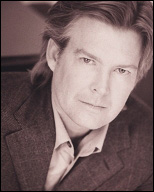 This week, guest blogger and Knights Templar expert Stephen Dafoe, turns to the tragic story of the death of Jacques De Molay, the last grandmaster of the Order of The Poor Fellow Soldiers of Christ and King Solomon’s Temple. Much has been made of DeMolay’s curse for it is said, as he refused to confess to crimes he did not commit, that he warned Pope Clement and King Philip they would both die within the year if they convicted his innocent Templar victims.
This week, guest blogger and Knights Templar expert Stephen Dafoe, turns to the tragic story of the death of Jacques De Molay, the last grandmaster of the Order of The Poor Fellow Soldiers of Christ and King Solomon’s Temple. Much has been made of DeMolay’s curse for it is said, as he refused to confess to crimes he did not commit, that he warned Pope Clement and King Philip they would both die within the year if they convicted his innocent Templar victims.
It’s a fascinating story. Be sure to visit www.templarhistory.com and learn even more about the fascinating history of The Knights Templar.

The Templar’s Demise – a three-part series on the demise of the Knights Templar
Part Three: The Curse of Jacques de Molay
By Stephen Dafoe
In August of 1308, Pope Clement V had issued a papal bull calling for a general church council to be held at Vienne in October of 1310. The purpose of the council was to try the matter of the heinous charges levelled against the Templars by King Philip IV of France. However, the council was postponed a year – not out of any procrastination, but because the papal commission who had been given the task of collecting evidence was having difficulties. Witnesses and testimonies contracted one another or, in many cases, even themselves. When all was said and done, the commission determined that the Templars and their Rule of Order were orthodox, but that some peculiar and unworthy aspects had been allowed to creep into the Templar initiation ceremonies. Those who had acknowledged these errors were absolved of their sins and reinstated with the Church, as was the case at Chinon in Tours. It was this conclusion that was to be presented to the Council of Vienne, a matter that, had it been brought to full light, would have changed the face of Templar history.
But such was not to be the case. Although the church fathers who had gathered at the council were, for the most part, doubtful of the Orders’ guilt, King Philip had no intention of letting the matter go in the Order’s favor. On 20 March, 1312, Philip, along with a sizeable portion of his army arrived at Vienne. Within two days, Clement called a special meeting with his commissioners and a number of cardinals, who, in a four-fifths majority, voted to dissolve the Order of the Temple. The result was the papal bull Vox in Excelso, penned on 22 March and read publicly on 3 April. With so much evidence in support of the continuation – albeit modified – existence of the Templars, Clement knew that his report would be met with resistance. To this end, a clerk announced that anyone who rose to speak to the matter without permission would be excommunicated. Of course, with Philip sitting in the council chambers and his army sitting outside, there was little that could be done. After all, Clement did not wish to suffer the same fate as his predecessor Boniface VIII, in whose death, Philip had played a prominent role.
But even in the bull dissolving the Templars, a document of far greater important than the Chinon Parchment, we see that it was not the Order’s guilt, but reputation that was the cause.
“Therefore, with a sad heart, not by definitive sentence, but by apostolic provision or ordinance, we suppress, with the approval of the sacred council, the order of Templars, and its rule, habit and name, by an inviolable and perpetual decree, and we entirely forbid that anyone from now on enter the order, or receive or wear its habit, or presume to behave as a Templar.”
Of course, this was but the first of several papal bulls dealing with the dismantling of an Order that had served Christendom for nearly two centuries. A short time later, Clement issued the bull Ad Providam, which transferred Templar properties and assets to the Hospitallers, who were further authorized to pay the former Templars a pension. In the end, Philip had succeeded in destroying the Templars, but failed to acquire any of their assets for himself. But it would not be his last dealing with the now defunct Order or its members; for de Molay, the last Grand Master of the Templars, was still in prison.
—
The Death of de Molay
 The story of Jacques de Molay’s final hours is an important one to Masonic Templars; for we see in his martyrdom a great act of resolve in the hour of danger, and a human parallel to the sufferings of Christ on the Cross. But de Molay’s execution, while a matter of historical record, has been greatly embellished over the years to include the notion that the last Grand Master cursed the king and pope, who died soon after. Although this story has formed the pinnacle of the Templar mythos for many years, early chroniclers mentioned de Molay’s execution in passing. The most reliable of the contemporary accounts comes to us from the continuation of the chronicles of Guillaume de Nangis. The writer tells us that on the Feast of St. Gregory (March 18) de Molay and other Templar leaders were brought to the steps of Notre Dame de Paris to hear the final decision of three cardinals, who had been charged with determining their fate. According to the chronicle, de Molay and Geoffrey de Charney – upon learning that they were to remain in prison for the rest of their lives – interrupted the cardinals in protest, retracting their pervious confessions. When Philip learned of the matter, he moved swiftly and ordered the same fate for the Templar leaders that he had issued to the fifty-four knights he’d burned at the stake in 1310. That evening de Molay and de Charney were taken to a little isle on the Seine and executed.
The story of Jacques de Molay’s final hours is an important one to Masonic Templars; for we see in his martyrdom a great act of resolve in the hour of danger, and a human parallel to the sufferings of Christ on the Cross. But de Molay’s execution, while a matter of historical record, has been greatly embellished over the years to include the notion that the last Grand Master cursed the king and pope, who died soon after. Although this story has formed the pinnacle of the Templar mythos for many years, early chroniclers mentioned de Molay’s execution in passing. The most reliable of the contemporary accounts comes to us from the continuation of the chronicles of Guillaume de Nangis. The writer tells us that on the Feast of St. Gregory (March 18) de Molay and other Templar leaders were brought to the steps of Notre Dame de Paris to hear the final decision of three cardinals, who had been charged with determining their fate. According to the chronicle, de Molay and Geoffrey de Charney – upon learning that they were to remain in prison for the rest of their lives – interrupted the cardinals in protest, retracting their pervious confessions. When Philip learned of the matter, he moved swiftly and ordered the same fate for the Templar leaders that he had issued to the fifty-four knights he’d burned at the stake in 1310. That evening de Molay and de Charney were taken to a little isle on the Seine and executed.
And this is where the curse myth begins, for the writer of the chronicle tells us that “They were seen to be so prepared to sustain the fire with easy mind and will that they brought from all those who saw them much admiration and surprise for the constancy of their death and final denial…” Beautiful and poetic words that should have been sufficient to solidify de Molay’s memory in the heart of all Templars; however, others would add to the story. In the popular tale, told in many Masonic templar settings over the years, de Molay did not suffer his fate with resolve and calm mind, but pronounced that before the end of the year Philip and Clement would meet him before God to answer for their crimes. While is certainly true that both men followed de Molay in death; Clement on April 20, as a result of his long suffered illness and Philip on November 29, after being thrown from a horse while hunting, it was not the curse that was responsible for the timing of their deaths, but the timing of their deaths that was responsible for the curse.
The closest contemporary source to the curse story comes from the words of Geoffrey de Paris, a clerk in Philip’s court who wrote in a poem that de Molay said God would avenge the Templars, for he knew who was truly in the wrong. It is not until 1330 that the curse legend begins to truly take form in the works of an Italian chronicler named Feretto de Ferretis, who puts the curse, not in de Molay’s mouth, but in the mouth of an anonymous Templar. Not until the sixteenth century, do we see the words actually ascribed to de Molay, when the French historian Paul Émile became the first to make the claim in his De rebus gestis francorum, published in 1548. Unfortunately, Émile was not the last and the myth of de Molay’s dying words has continued long after the Order he led has vanished into the pages of history and legend.
Having spent the past few installments covering the end of the Templars, the next article in this series will jump back to the beginning and examine the history and mythology surrounding the origins of the Templars in the years that followed the First Crusade.

Check back next week for another exciting Templar Tuesday!





 10:24 Yes WAY COOL ZOMBIE with no legs! AWESOME with a capital AWE!
10:24 Yes WAY COOL ZOMBIE with no legs! AWESOME with a capital AWE!


 This week’s Five On Friday guest is thriller writer Richard Doetsch. If you love page turning, Dan Brown or Steve Berryesque type thrillers, then I highly encourage you to pick up one of Richard’s Books. You can learn more about Richard at his
This week’s Five On Friday guest is thriller writer Richard Doetsch. If you love page turning, Dan Brown or Steve Berryesque type thrillers, then I highly encourage you to pick up one of Richard’s Books. You can learn more about Richard at his 
 The Thieves of Darkness
The Thieves of Darkness
 10:27 Finally, the first Grace Park sighting! (Important Disclaimer. In case you were wondering. Grace Park is the Official Emergency Back Up Wife of Michael Spradlin. And yes. My wife understands this. After all: Emergency!). And let me just say, I saw Grace Park in person at San Diego Comic Con this year, and was about to inform her of her status as my Official Emergency Back Up Wife, when I learned, quite unfortunately I might add, security guards at the San Diego Convention center ARE equipped with tasers. If you don’t know who Grace Park is, you might recognize her as Boomer on
10:27 Finally, the first Grace Park sighting! (Important Disclaimer. In case you were wondering. Grace Park is the Official Emergency Back Up Wife of Michael Spradlin. And yes. My wife understands this. After all: Emergency!). And let me just say, I saw Grace Park in person at San Diego Comic Con this year, and was about to inform her of her status as my Official Emergency Back Up Wife, when I learned, quite unfortunately I might add, security guards at the San Diego Convention center ARE equipped with tasers. If you don’t know who Grace Park is, you might recognize her as Boomer on 


